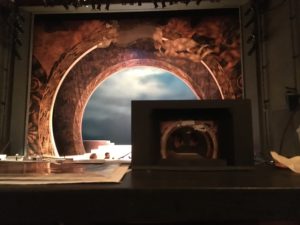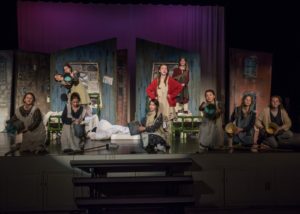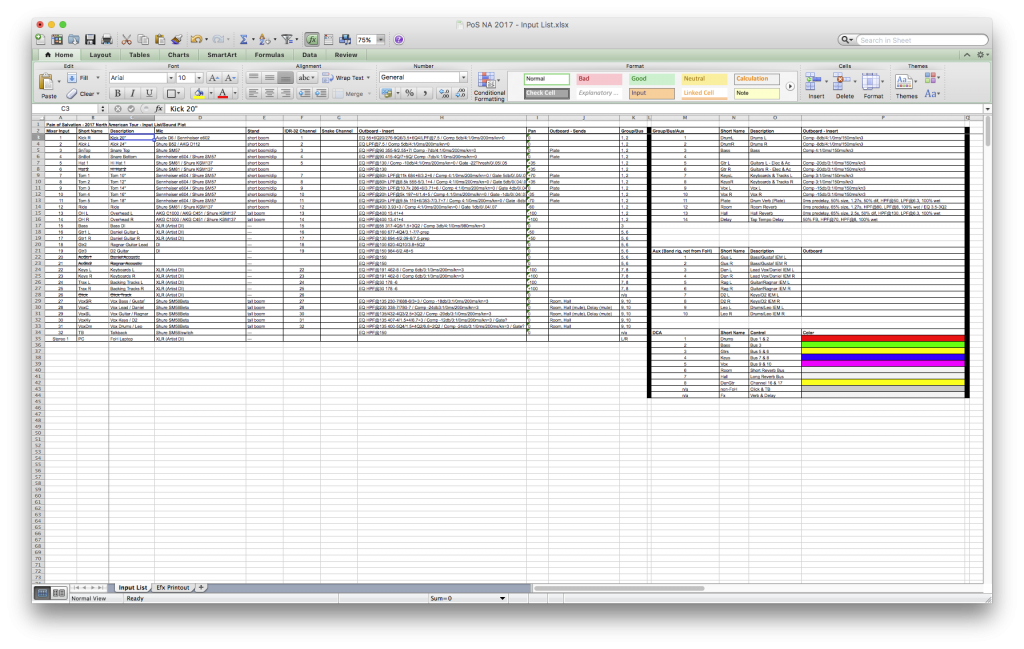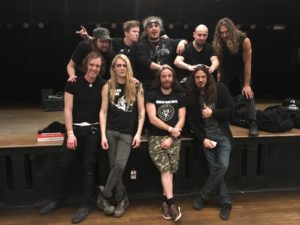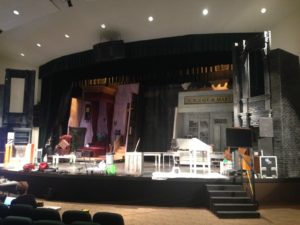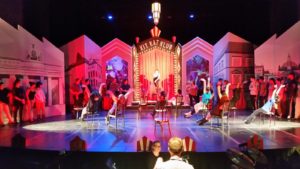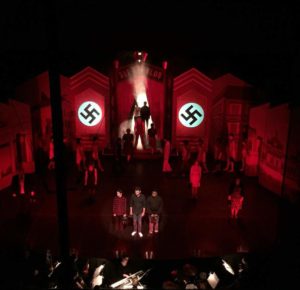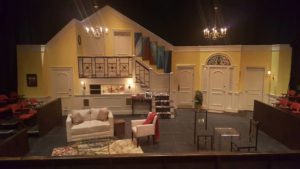Passing through the halls of Yale
Over the course of April and May, both Mary and I have been working at Yale, both in the Electrics (Lighting) department. She has been hired on as staff/Assistant Master Electrician for the Carlotta Festival, while I have been contracted in as the Master Electrician for the Yale Baroque Opera Project, “La Didone.”
This means that while we are working for the same department at the same school, we are in different buildings/city blocks. But it’s been very nice, as we get to pass by each other in the halls and on the street between errands. I’ve been in and out of Yale lighting longer and know my way around, but she’s a regular employee with a much bigger key ring, so we’ve been pretty helpful to each other getting our shows lit. She especially saved us on our last day of hang/focus, taking over the board op duties while I grabbed the newly arrived second genie and finished focus. Score!
Mary’s show just opened last night. Mine is already now closed and struck. I don’t have the official photos yet, but here is a shot of the model, in front of the stage. The designer for my show, Steve Carmichael, had flown in from Santa Fe and had never been to the space before. So there had been months of preparation between us. I tried to get all of the advance work done from the Pain of Salvation tour bus in February, which suited him well – we are both pretty detail-oriented and knew there would be issues coming up later in the process, so might as well get as far ahead as we could! Great guy, great designer, and I look forward to the chance to do it again with the whole crew!
-brian
